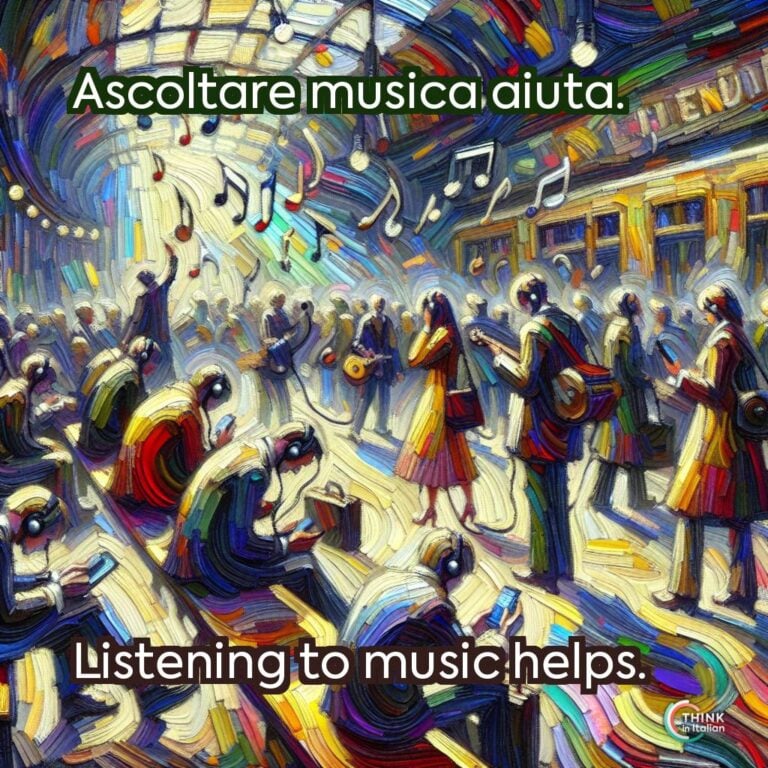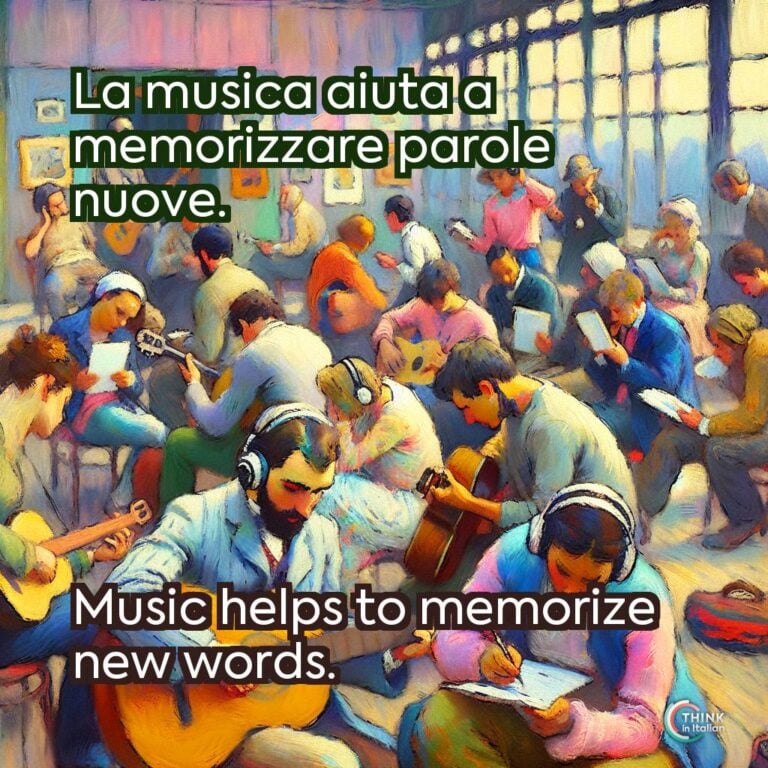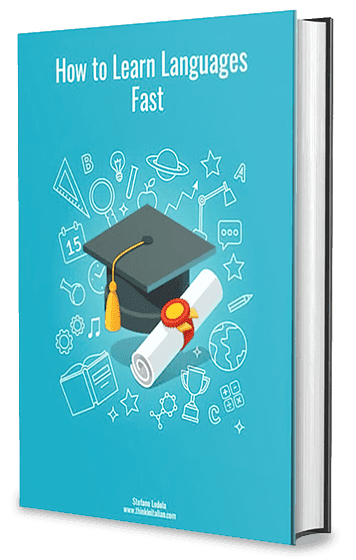How can Music Help me Learn a Language?
It Improves Memory
Whether you are a beginner or an advanced language learner, integrating music in your language learning process will help you improve your linguistic skills.
Music activates multiple areas of the brain, including the hippocampus and the frontal cortex, which are fundamental for memory formation and retrieval.
Moreover, several studies have shown that listening to music can enhance the release of dopamine, a neurotransmitter associated with pleasure and reward, which also plays a role in memory and learning.
This is very important for language teachers to remember: the environment in which language learning occurs, must be positive and safe. Only this way can dopamine release occur and positively affect language learning.
Another way music can contribute to a stress-free learning environment is because it has been shown to reduce stress and anxiety, which can otherwise impair cognitive functions, including memory.
Moreover, music with a regular rhythm and structure can improve attention and facilitate the encoding of information into long-term memory. The emotional connection and engagement elicited by music can also enhance the recall of associated information.
When I was in high school, learning Spanish, I heard a song called “Latinoamérica” by Calle 13. I still remember every single word of its lyrics, and I still sing it from beginning to end whenever I listen to it.
It Enhances Pronunciation
Singing along with music is a fun way to mimic native pronunciation and rhythm: singing engages the brain’s auditory and motor systems, which helps in better auditory discrimination and motor control necessary for accurate pronunciation.
Studies have shown that musical training enhances phonetic and prosodic aspects of speech, such as rhythm, intonation, and stress patterns. Thanks to their repetitive nature, songs provide ample practice and reinforcement, facilitating muscle memory in the articulatory muscles involved in speech.
Research also indicates that listening to and mimicking musical rhythms can improve timing and coordination in speech production. It is not a coincidence that our course Ripeti con me is based on mimicking and repetition: it is scientifically proved and tested!
It Increases Motivation
Music significantly enhances the learning process by making it more enjoyable and motivating. I noticed that since I integrated Italian songs into my students’ learning routine, their practice sessions became more engaging, as music adds an element of fun to the experience.
Many students claim that this approach makes learning feel less like a chore and more like an exciting activity: as mentioned before, in fact, it is scientifically proven that a positive and enjoyable environment is essential to language learning.
It Shows you the Culture
Understanding the cultural context of songs adds another crucial layer to language learning. I remember one student once told me “I listened to Bella Ciao and learned more about Italy’s resistance movement“.
The song has now become an anthem of freedom and resistance, and provides a unique historical perspective that textbooks alone cannot offer.
But Bella Ciao is not the only Italian song infused with important cultural references and historical context. Through most of the Italian songs, you can encounter regional dialects and idiomatic expressions that are rarely covered in standard language courses.
It Reinforces Repetition
The repetitive nature of songs makes them ideal tools for language learning. Music naturally incorporates repetition, which is crucial for reinforcing new vocabulary and grammatical structures.
Additionally, songs often repeat key phrases in different contexts within the same song, providing varied examples of how the words and structures can be used.
Learning words in context is indeed the best way to properly acquire new vocabulary, as it helps learners understand the versatility of certain phrases and how they can be applied in different situations.
It Expands Vocabulary and Grammar
By now, I should have made it clear that music helps with vocabulary retention thanks to rhythm and melody, creating language patterns in your brain. However, songs can also be a powerful tool for learning grammatical structures within a meaningful and engaging context.
Unlike traditional textbooks, songs integrate these structures into real, everyday language use. Lyrics frequently employ a variety of grammatical constructs, including verb tenses, moods, and sentence structures, providing practical examples of how these rules are applied in natural speech.
Moreover, songs often feature colloquial language that reflects how native speakers actually use the language in daily conversations, such as contractions, informal speech patterns, or complex sentences.
Learn Italian music terms and expand your vocabulary!
The Power of Music in Language Learning
The Neuroscience Behind it
As a linguist, I feel morally obliged to provide you with some scientific context as to why music and language are so intertwined, so let me start from language.
According to Chomsky’s Universal Grammar theory, humans are innately tuned into language acquisition. This theory suggests that all neurotypical humans learn language through an inborn linguistic capability that allows them to retrieve and apply grammatical patterns naturally.
Interestingly, music, like language, involves perceptually discrete elements organized into hierarchically structured sequences, therefore not only do music and language have several aspects in common, but also several neural modules appear to be similarly involved in speech and music.
Evidence suggests that rhythm components influence early linguistic production in children, and that music plays a critical role in language development. This indicates that music can facilitate language acquisition, which is a principle I apply in my teaching.
Further evidence shows that musical improvisation heightens brain activity in a region that belongs to Broca’s area. What I found surprising is that this region is traditionally linked to language processing.
In fact, Broca’s area is crucial for both language production and comprehension. This indicates that improvising music might engage neural pathways similar to those used in complex linguistic tasks.
Similarly, spontaneous speech activates brain regions responsible for creative thinking. This is why I incorporate activities that encourage my students to produce real-time language.
Practical Tips: Using Music to Learn Italian
- Choose Your Songs Wisely: choose songs that you enjoy and that match your language level. Start with slower, clearer songs and gradually move to faster, more complex ones.
- Sing Along: don’t just listen passively, but rather sing along to practice pronunciation and rhythm.
- Translate Lyrics: translate the lyrics to understand the meaning and context. This helps in learning new vocabulary and grasping the song’s message
If you want to start practicing Italian with Italian songs, we have a perfect article for that!
Time to Listen Some Music
Music isn’t just background noise, it’s a channel for emotions and memories. Integrating music into your Italian learning routine can be a game-changer.
Music makes learning more enjoyable and effective, thanks to the repetitive nature of songs which enhances memory, pronunciation, and cultural understanding.
I provided you with the best Italian songs to practice, so now it’s your turn: put on your favorite one and let the music guide your language journey.
Reference List
Cook, V., & Newson, M. (2014). Chomsky’s universal grammar: An introduction. John Wiley & Sons.
Koskinen, M., Kurimo, M., Gross, J., Hyvärinen, A., & Hari, R. (2020). Brain activity reflects the predictability of word sequences in listened continuous speech. NeuroImage, 219, 116936.
Li, C., Huang, J., & Li, B. (2021). The predictive effects of classroom environment and trait emotional intelligence on foreign language enjoyment and anxiety. System, 96, 102393.
Li, Q., Liu, G., Zhang, Y., Wu, J., & Huang, R. (2024). Neural correlates of musical familiarity: a functional magnetic resonance study. Cerebral Cortex, 34(4), bhae177.Jäncke, L. (2012). The relationship between music and language. Frontiers in psychology, 3, 123.
Patel, A. D. (2003). Language, music, syntax and the brain. Nature neuroscience, 6(7), 674-681.
Pino, M. C., Giancola, M., & D’Amico, S. (2023). The association between music and language in children: A state-of-the-art review. Children, 10(5), 801.
Tachibana, A., Noah, J. A., Ono, Y., Irie, S., Tatsumoto, M., Taguchi, D., … & Ueda, S. (2024). Rock music improvisation shows increased activity in Broca’s area and its right hemisphere homologue related to spontaneous creativity. BMC Research Notes, 17(1), 61.








